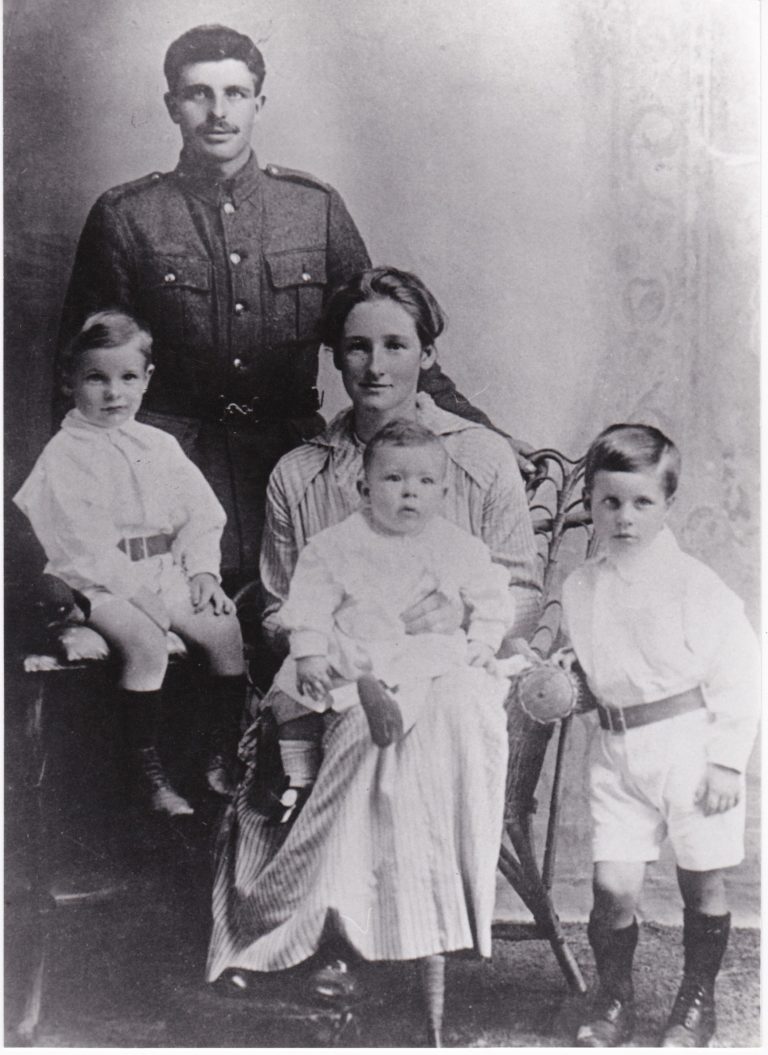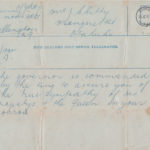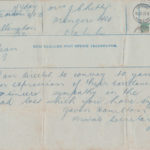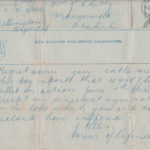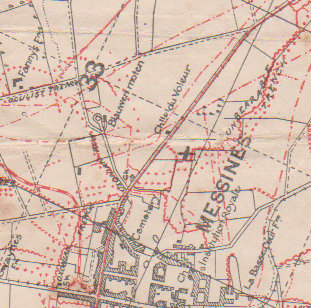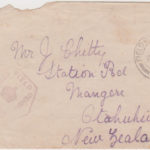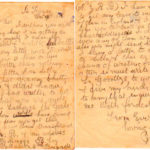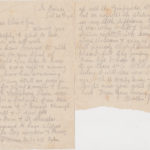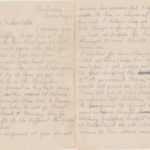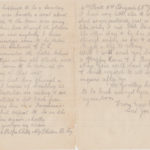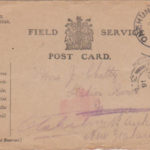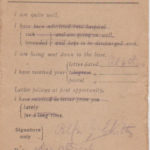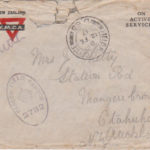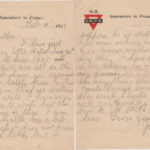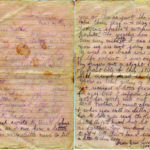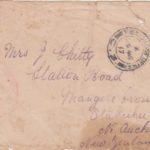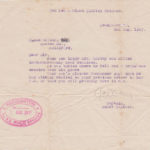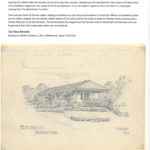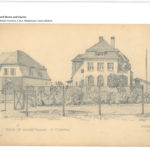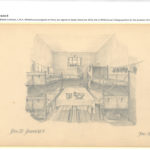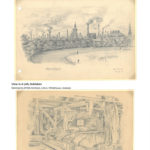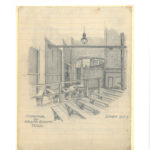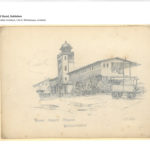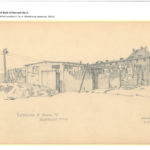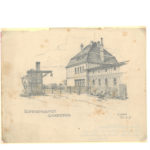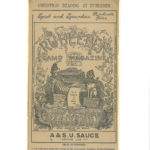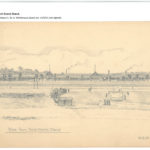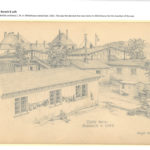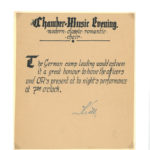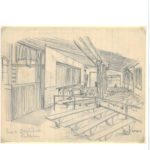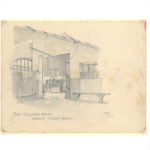Anzac Day – A Special Day for our Family
Joseph Chitty
Introduction
Joseph Chitty, my Grandfather served in WWI and was killed at the battle of Messines, Belgium 17th June 1917. He left behind a wife, Lila, and three young boys; Gilbert (5 years old) , Geoffrey my father (3 years old), and Clarence (1 year old).
I am fortunate that my Uncle Gilbert gave me the only remaining correspondence relating to Joseph Chitty that was sent to his father Jessie Chitty and other relevant correspondence relating to his death because I had taken a great interest in this. Letters home to his wife (my Grandmother) had been lost in a house fire after the end of the war.
Imagine receiving telegrams like any one of these!
A little bit about Joseph’s background
Joseph Chitty. Rfn, 10998. 4th Bn 3rd (Rifle) Brigade.
Born 23/3/1890 at Lockner farm, Chilworth, near Guildford, South London. The farm was leasehold and the tenants were Joseph’s parents, Jesse Chitty and his wife. Jesse was born in India, his father Tom being in the Indian Army. Lockner was a grazing property and had stables. The property is still in its original state, although the stream running through it is no longer navigable as it was during the First World War. A gunpowder factory was located here and the gunpowder shipped out by barge.
Joseph’s parents came to New Zealand and lived in Manurewa. Joseph married Lilla Jane Monrath Johnstone 3/6/1911, and they had three sons. They lived in Hawera, Whangarei and Hamilton. Geoffrey Marion Chitty and Gilbert Lloyd Chitty were born in Hawera. Clarence Joseph Jack Chitty was born in Whangarei.
Joseph enlisted in the First World War and was sent to France. He served in the Battle of the Somme and on 4th October 1916 joined B Company, and Platoon Commander B. Mollison’s platoon at Messines, Belgium. He died in action on 7th June 1917 at Messines. In a letter to Joseph Chitty’s father, B. Mollison in a testimonial to Joseph’s bravery, made the following comments.
“On the 4th July 1916 he joined B Company and was posted to my platoon and I very soon sorted him out as a likely man and he very early proved his worth Joseph Chitty and became one of my best scouts. His first real chance arrived when the platoon had to make a raid on the Hun lines; as you probably know. Sergeant McConachie and he did all the scouting and on the night of the raids these two ensured the success of the stunt by the daring way they went about their job of clearing dugouts full of Huns and they did not take prisoners but bombed everyone they came across. For this act I recommended him for a decoration and also the Sergeant who got the DCM but I do not know why he did not get one, but you can believe me that if the one deserved the DCM, the other did also, because they worked together and did the same work.
Later on I again submitted his name for decoration for the same act and for good work as a scout, but with no better results. Now things were quiet until our last stunt at Messines and in this attack he simply outshone everyone in the Battalion; on the way over the infantry was held up in one sector by machine gun fire, when Joe worked his way round to the rear of the emplacement and captured the gun and crew, but as our job was further on he handed them on to other N Z troops and carried on with his own job and collected about 30 prisoners in all before reaching our own objective. After the men were all set to work consolidating our position Joe and I explored all dugouts in the vicinity to make sure there were no more Huns about. We were fairly short of tools so your boy went into Messines several times under heavy shell fire to try to find some shovels and sandbags. During one of his trips he found a bucket of good water and some dry tea, and he evidently got to work, because you can imagine our surprise when he arrived with hot tea for the Platoon.
After all our work was finished and we had settled down for a well deserved rest, a Hun 5.9 shell landed into our trench and your poor son got the full force of it and was killed instantly and was buried close by his own section and a wooden cross was erected over his grave at map reference Ploegsteert 28.S.W.4.33a8-1. I enclose a small map with a mark approximately the location of his grave. It will probably be a relief to you to know that ever since being in the Company I have never since seen such a gloom pass over any body of men as did the news of the death of Joe Chitty.”
Click left image for the full map enclosed with the letter.
Gillian and I have been to Belgium twice to connect with this family tragedy. On the first occasion, we arrived at Messines and called at the Public Relations Office. A very helpful man, who hardly spoke a word of English, looked at the map for a long time and said I can take you to the exact place where Joseph was buried. The reason he took such a long time was that Messines had been obliterated by the war, and even the Cathedral has been rebuilt on a different site. The only standing structure that he could recognize was the “Chapel du Voleur” (Chapel of the Thief) which survived the war, and was on the opposite side of the road to where Joseph was buried. This is now a paddock with cattle grazing. The Chapel is a small Roman Catholic Chapel which are common throughout Europe containing effigies and religious items.
Other Correspondence
The following additional items of correspondence are displayed:
We Now Know a Bit More
Since the WWI Veteran’s details have been made available on-line, we now have a hint why the DCM wasn’t awarded to Joseph!
Like many brave people, discipline was sometimes an issue, and Joseph was no exception. He once had his pay docked for “playing games of chance”, and on more than one occasion for being “absent without leave”. The last incident was just prior to him being killed, and after he was killed the penalty rescinded.
